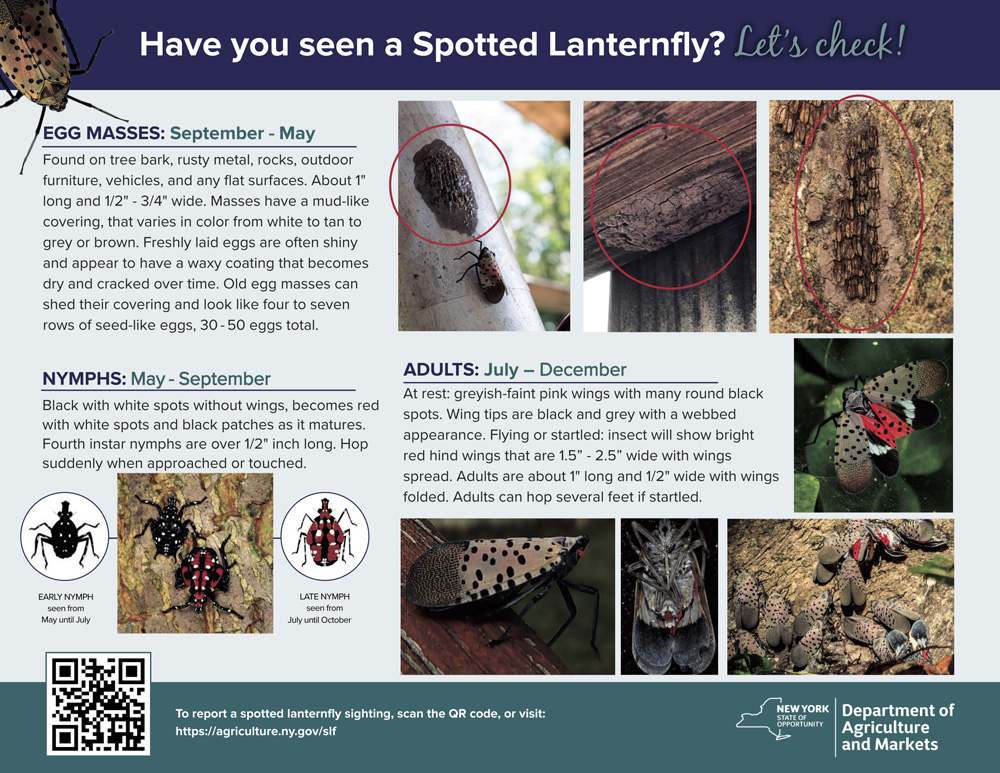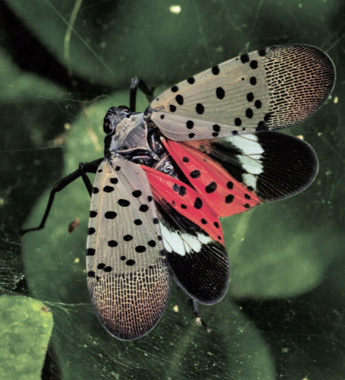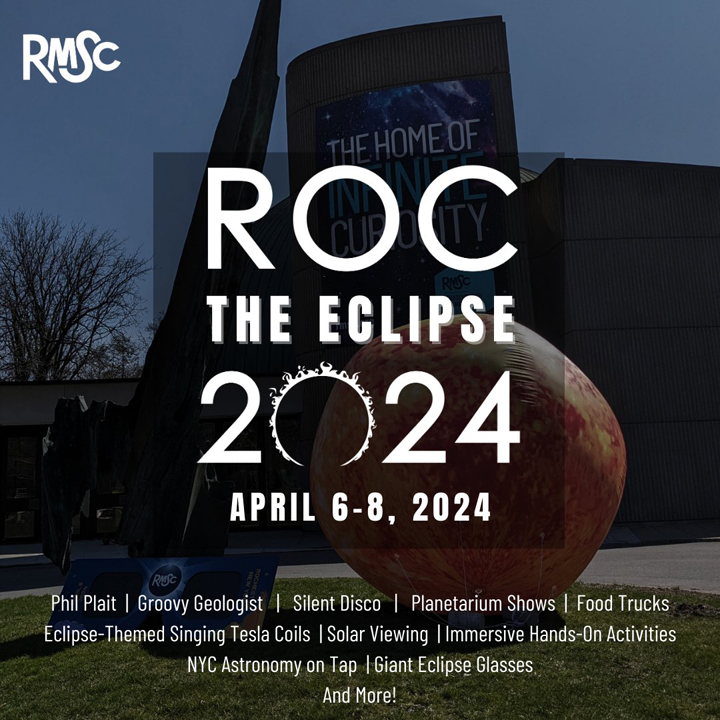Spotted Lanternfly found in the Finger Lakes area

The New York State Department of Agriculture and Markets has detected Spotted Lanternfly (SLF) in the grape-growing region of the Finger Lakes. Department inspectors from the Division of Plant Industry confirmed the presence of SLF in Romulus following reports it received from its partners at the Integrated Pest Management (IPM) Program at Cornell University. To help the Department identify the extent of the established population in the area, the Department is urging grape growers and residents to report any sightings by visiting agriculture.ny.gov/reportslf.

State Agriculture Commissioner Richard A. Ball said, “We have been working with our partners for years to contain SLF and slow the spread of this invasive species. With this new detection, we are certainly concerned as SLF is known to feed on plants and crops that are critical to New York’s agricultural economy, such as grapevine, which is abundant in this area of the Finger Lakes. However, we are also optimistic that through education, a number of control methods, and with the public’s help, we will be able to manage SLF and mitigate the impact to the grape growing industry.”
Since the first detection of SLF in New York on Staten Island in 2020, the New York State Department of Agriculture and Markets has been working closely with its partners statewide, such as New York State Department of Environmental Conservation (DEC), Office of Parks, Recreation and Historic Preservation, Department of Transportation, Thruway Authority, the United States Department of Agriculture, Cornell University and its IPM Program, and the Cornell Cooperative Extension network to slow the spread of this invasive insect. It has since been reported in all New York City boroughs, Long Island, and several areas in Upstate New York; however, this is the first detection in proximity to commercial vineyards in the Finger Lakes.
Over the next few weeks, the Department will be conducting a thorough survey in Romulus and the surrounding area. It also encourages grape growers and residents to report any sightings to the Department by following these steps:
•take a photo,
•collect a sample and place it in a freezer or in a jar with rubbing alcohol or hand sanitizer,
•contact the SLF responders and report SLF directly at agriculture.ny.gov/reportslf, and
•after reporting SLF in your area and collecting a sample, kill any additional SLF you see by stepping on it or crushing it.
The Department is also urging any travelers to the area to thoroughly inspect vehicles, luggage and gear, and all outdoor items for SLF. If SLF adults are found, travelers should report and destroy them.
Identifying SLF
SLF is a destructive pest that feeds on more than 100 plant species, including tree-of-heaven, and plants and crops that are critical to New York’s agricultural economy, such as grapevine, apple trees, and hops. It is currently in the nymph stage, with black bodies and white spots, and, as it matures, will turn red with white spots. SLF will enter the adult stage later in July/August. Adult SLF are easy to identify and are approximately one inch long and half an inch wide at rest, with eye-catching wings. Photos of both the nymph and adult phases can be seen at https://tinyurl.com/49u3vrcv.
Adults are active from July to December and begin laying eggs in September. Signs of an SLF infestation may include:
•One-inch-long egg masses that are brownish-gray, waxy and mud-like when new. Old egg masses are brown and scaly.
•Massive honeydew build-up under plants, sometimes with black sooty mold developing.
While these insects can jump and fly short distances, they spread primarily through human activity. SLF can lay their eggs on any number of surfaces, such as vehicles, stone, rusty metal, outdoor furniture, and firewood. Adult SLF can hitch rides in vehicles, on any outdoor item, or cling to clothing or hats, and be easily transported into and throughout New York, so residents are asked to be vigilant.
Learn more on the Department’s website at https://agriculture.ny.gov/spottedlanternfly.
Provided information




